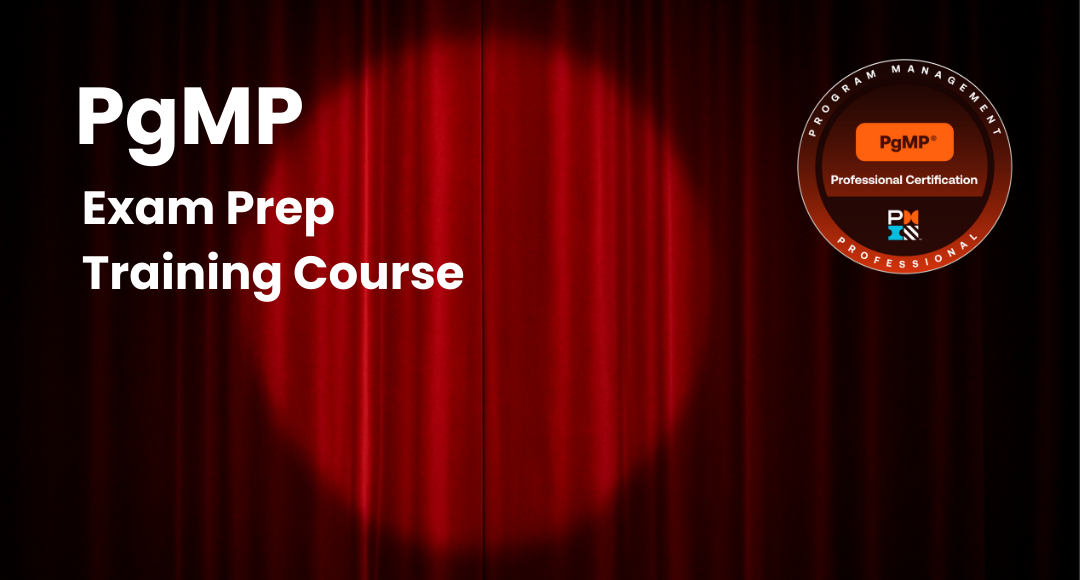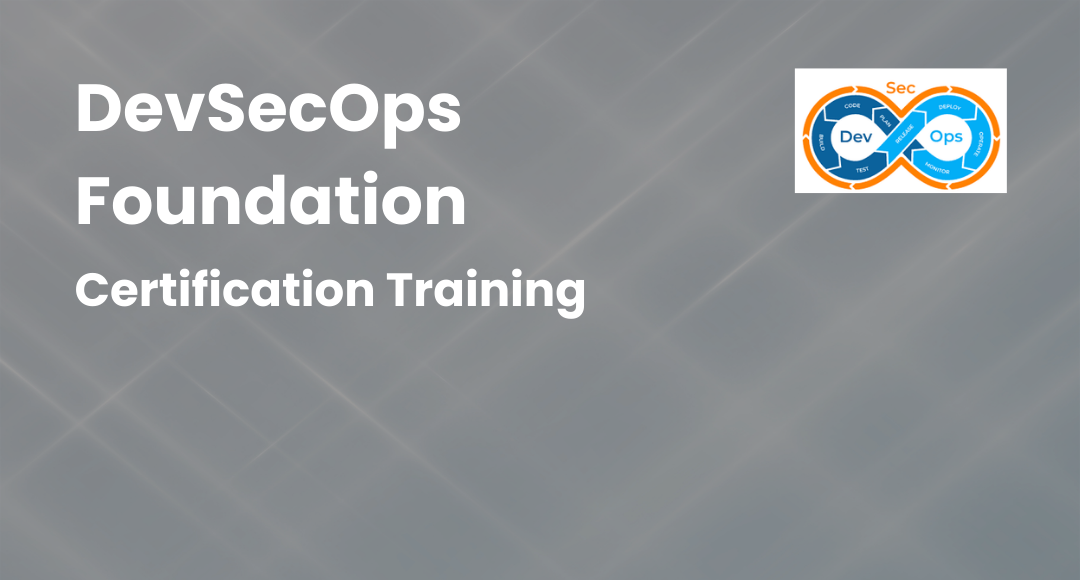Saturation Stage of Product Life Cycle: Complete Guide
-
 By Sushmith
By Sushmith - Published on Nov 2 2023

Table of Contents
- What is Saturation Stage?
- How to Identify the Saturation Stage in Product Life Cycle
- Duration of Saturation Stage in PLC
- Pros and Cons of the Saturation Stage of Product Life Cycle
- Most Common Challenges faced in Saturation Stage
- Strategies for Managing the PLC’s Saturation Stage
- Tips to Avoid Entering the Decline Stage
- Extension Strategies for Longer Product Life Cycle
- Saturation Stage of Product Life Cycle Example
- FAQs
What is Saturation Stage?
Saturation stage is one of the most crucial stages of the product life cycle stages, requiring a keen attention on the changes and innovation of the product. It represents a critical juncture where a product's growth stabilizes, and sales reach Saturation. Businesses adapt and understand their strategies accordingly.
The saturation stage, also known as market saturation, is the Fourth phase in the product life cycle. During this phase, the product reaches its maximum market share and experiences a slowdown in sales growth. It's characterized by a balance between new and already existing customers.
How to Identify the Saturation Stage in Product Life Cycle
For businesses, it is crucial to identify the saturation stage in a product's life cycle. Doing so helps making informed decisions and designing strategies accordingly. In turn, it helps adapt and maintain profitability of the product. Following are the steps that help you identify the saturation stage effectively.

Sales Plateau
One of the most apparent signs of the saturation stage is a plateau in sales growth. Your product's sales may continue to increase, but at a much slower rate than in the growth stage.
Market Saturation
Assess the market for your product. If the majority of your target audience has already made a purchase or is aware of your product's existence, strongly indicates that you've entered the saturation stage.
Competitive Landscape
Monitor the competition closely. In the saturation stage, you're likely to face intense competition as other businesses recognize the market's potential. Price wars, aggressive marketing campaigns, and product differentiation efforts are common.
Customer Retention Focus
Shifting your attention from acquiring new customers to retaining existing ones is a hallmark of the saturation stage. Building strong customer relationships and ensuring satisfaction become critical.
Market Research
Conduct regular market research to gauge customer sentiment and demand. Look for signs of market maturity and gather feedback from your customers on their preferences and expectations.
Product Innovation
Assess your product's features and capabilities. In the saturation stage, it's essential to innovate to maintain or expand market share. Consider adding new features or improving existing ones.
Duration of Saturation Stage in PLC
The duration of the saturation stage in the Product Life Cycle (PLC) can vary significantly depending on various factors. There is no fixed or universal timeframe for how long a product remains in the saturation stage. Several key elements influence the duration:
Industry and Product Type:
Different industries and product categories have varying saturation timelines. Products like smartphones experience a shorter saturation stage due to advancements and changing consumer preferences. Meanwhile, products like household cleaning supplies have a more extended saturation phase.
Market Dynamics:
The competitive landscape and market conditions play a crucial role. Highly competitive markets may see products move through the saturation stage more quickly as companies vie for market share, while less competitive markets may have longer saturation phases.
Product Innovation:
The rate of product innovation can impact how long a product stays in saturation. Products that continuously introduce new features or versions may delay the onset of saturation or experience shorter saturation periods.
Consumer Behavior:
Changes in consumer behavior, preferences, and buying patterns can influence how long a product remains in the saturation stage. For example, a sudden shift in consumer demand can accelerate a product's movement from saturation to decline.
Marketing and Promotion:
Effective marketing and promotional strategies can prolong the saturation stage by stimulating ongoing demand. Conversely, a lack of marketing efforts can expedite the transition to the decline stage.
Market Size:
The size of target market also matters. In smaller markets, saturation may occur more quickly in more diverse markets with a broader customer base.
External Factors:
Economic conditions, technological advancements, and unforeseen events (like global pandemic) can all impact the duration of the saturation stage.
In general, it's essential for businesses to monitor market conditions, consumer trends, and competitive forces continually. Adaptation and agility are the key to extending the saturation stage or transitioning smoothly to the next phase of the product life cycle.
Successful businesses often employ strategies like product diversification, and continuous innovation to navigate and maximize the product's lifecycle.
Key Characteristics of PLC’s Saturation Stage
The saturation stage of Product Life Cycle comprises of several key characteristics that distinguish it from other stages. Understanding these characteristics is crucial for businesses to navigate this stage effectively and make strategic decisions. Here are saturation stage’s key characteristics:

Stable Sales Growth:
One of the primary characteristics of the saturation stage is that sales growth stabilizes. While there may still be increases in sales, they occur at a significantly slower rate than during the growth stage. Sales figures tend to flatten out.
Market Maturity:
The market for the product becomes mature during the saturation stage. This intends that the product has already reached a large portion of its potential customer base. Most of the target audience may have already purchased the product since they are aware of the market.
Intense Competition:
As a market becomes saturated, competition intensifies. Rival companies may enter the market or introduce similar products to capture their share. This increased competition often leads to price wars and aggressive marketing efforts.
Customer Retention Focus:
In the saturation stage, it becomes more challenging to acquire new customers. Therefore, businesses often shift their focus from customer acquisition to customer retention. Building strong customer relationships and ensuring customer satisfaction become essential to maintaining market share.
Product Differentiation:
To stand out in a crowded market, businesses often invest in product differentiation. This can involve adding new features, improving product quality, enhancing customer service, or developing unique marketing campaigns to set their product apart.
Saturated Market Segments:
Specific market segments or customer groups may become saturated during this stage. This means that there are few untapped opportunities for growth within these segments, leading businesses to explore niche markets or diversification.
Pros and Cons of the Saturation Stage of Product Life Cycle
The saturation stage of the Product Life Cycle (PLC) has both advantages and disadvantages for businesses. Understanding these pros and cons is essential for making informed decisions and crafting effective strategies during this phase. Let's explore the pros and cons of the saturation stage:

Pros of the Saturation Stage:
Stable Revenue: The stability in sales growth during the saturation stage can provide a predictable and stable revenue stream for businesses. This can be advantageous for financial planning and investment.
Profitability: While growth rates may slow, the saturation stage often yields higher profit margins. Businesses can optimize their operations, reduce costs, and maximize profits as they no longer need to invest heavily in product introduction or expansion.
Brand Recognition: Products that have reached the saturation stage naturally have strong brand recognition. This results in increased customer loyalty and trust, which can benefit for a long-term success.
Competitive Advantage: Businesses that excel in customer service, product quality, or innovation during the saturation stage can gain a competitive advantage over its competitors. This helps businesses in maintaining market share and profitability.
Customer Retention: With a focus on customer retention, businesses can build strong and long lasting relationships with their customer base. Loyal customers are more likely to make repeated purchases and recommend the product giving new customers.
Innovation Opportunities: While the rate of innovation may slow down, there are still opportunities for product improvements and enhancements. Updated and latest innovations that fall in trend can help sustain customer interest.
Market Segmentation: Exploring niche markets or untapped customer segments can lead to continued growth within specific areas, even if the overall market is saturated.
Cons of the Saturation Stage:
Slower Growth: The most apparent disadvantage of the saturation stage is the slower rate of growth. Businesses must adapt to the reality of reaching a market's maximum potential, which can be challenging.
Intense Competition: As competition intensifies, maintaining market share can become costly and difficult. Price wars and aggressive marketing efforts can erode profit margins.
Limited Market Expansion: Expanding the market becomes increasingly challenging, as most potential customers have already made their purchase or are aware of the product. This limits opportunities for significant growth.
Risk of Decline: Without effective strategies and continuous efforts, products in the saturation stage may eventually transition into the decline stage, leading to declining sales and market share.
Resource Allocation: Businesses must carefully allocate resources to balance marketing efforts, customer retention strategies, and product innovation. Misallocation can result in wasted resources.
Market Saturation: In some cases, the market may become overly saturated with similar products, making it difficult for any of the product to stand out.
Product Fatigue: Customers may become adapted to the product, leading to a sense of product fatigue. This can make it challenging to generate excitement or interest in the product.
In conclusion, the saturation stage presents both opportunities and challenges for businesses. While it offers stability, profitability, and the chance to build a strong brand, it also requires adapting to slower growth, intense competition, and the need for strategic resource allocation.
Successful businesses in this stage focus on customer retention, innovation, and efficient operations extending their product's life cycle.
Most Common Challenges faced in Saturation Stage
The saturation stage of the Product Life Cycle (PLC) poses several common challenges for businesses. Recognizing and addressing these challenges is crucial for sustaining profitability and extending the product's life cycle. Here are some of the most common challenges faced during the saturation stage:
Intense Competition: With numerous competitors vying for market share, businesses often face heightened competition during the saturation stage. This can lead to price wars, increased marketing expenses, and challenges in differentiating the product.
Market Saturation: The market becomes saturated with the product, meaning that most potential customers who are interested in it have already made their purchase. This limits opportunities for further growth within the current market.
Slower Growth: Sales growth decelerates significantly during this phase, which can be frustrating for businesses accustomed to rapid expansion. Managing expectations and adapting to slower growth rates are essential.
Customer Retention: Maintaining customer loyalty becomes vital in the saturation stage. Businesses must invest in excellent customer service, loyalty programs, and ongoing customer engagement to retain their customer base.
Innovation Challenges: While innovation remains important, it may become more challenging to introduce groundbreaking changes. Incremental innovation and product enhancements become necessary to sustain customer interest.
Price Sensitivity: Customers in saturated markets are often price-sensitive. Balancing competitive pricing with maintaining healthy profit margins can be a delicate task.
Global Expansion: Exploring international markets and expanding the product's reach can be a strategy to counteract market saturation, but it comes with its own set of challenges, including cultural differences and regulatory compliance.
Sustainability: Sustainability and ethical considerations are increasingly important to consumers. Adapting products and practices to meet these expectations may be necessary.
It is necessary to clearly strategize to analyze and track the saturation stage. Businesses focus on customer retention, innovation, efficient resource allocation, and effective marketing in order to extend and propagate the product's life cycle and maintain effectiveness.
Strategies for Managing the PLC’s Saturation Stage
Managing the saturation stage of the Product Life Cycle (PLC) requires a strategic approach to sustain profitability and extend the product's lifecycle. Here are strategies that businesses can employ to effectively manage the challenges of this stage:
Customer Retention Focus: Prioritize customer retention strategies to maintain and strengthen relationships with existing customers. Excellent customer service, personalized experiences, and loyalty programs can enhance customer loyalty.
Product Differentiation: Continue to innovate and differentiate the product. Even small enhancements can help keep the product fresh and appealing to customers. Consider adding new features, improving quality, or enhancing digital support.
Efficient Resource Allocation: Carefully allocate resources to balance marketing efforts, customer retention initiatives, and product improvements. Ensure that resources are used effectively to maximize ROI.
Market Segmentation: Explore niche markets or untapped customer segments that may still offer growth potential. Tailor your marketing and product offerings to cater to these specific audiences.
Pricing Strategies: Implement flexible pricing strategies to adapt to price sensitivity in the saturated market. Consider discounts, bundles, or loyalty programs to maintain competitiveness while preserving profit margins.
Innovative Marketing: Develop creative and innovative marketing campaigns that resonate with customers. Storytelling, emotional branding, and experiential marketing can help differentiate your product.
Global Expansion: Consider expanding into international markets to counteract saturation in your domestic market. Conduct thorough market research and adapt your product and marketing strategies to suit local preferences.
Continuous Market Research: Invest in ongoing market research to stay updated on changing consumer preferences, market dynamics, and emerging trends. Use data-driven insights to adapt your strategies proactively.
To successfully manage the saturation stage, it is most required to tailor all these strategies to a specific product and its market trend. It's essential to remain agile and responsive to changes in customer preferences and competitive forces. This delays product’s lifecycle ad maintains market presence.
For deeper insights on Strategies, explore our blog on Product Life Cycle Strategies: Key to Maximizing Product Efficiency.
Tips to Avoid Entering the Decline Stage
Avoiding the decline stage in the Product Life Cycle (PLC) and prolonging the product's life cycle requires proactive measures and strategic planning. Here are tips to help your product stay relevant and avoid entering the decline stage:
Continuous Innovation: Maintain a culture of innovation within your organization. Continuously seek ways to improve the product, add new features, or adapt to changing customer needs. Stay ahead of the competition through regular updates and enhancements.
Market Research: Conduct thorough market research to stay informed about evolving customer preferences, emerging trends, and shifts in the competitive landscape. Use data-driven insights to guide product development and marketing strategies.
Product Diversification: Explore opportunities to diversify your product line. Introduce related products or variations that cater to different customer segments or address complementary needs. This can help mitigate the risk of a single product's decline.
Marketing and Promotion: Invest in effective marketing and promotional strategies to maintain visibility and customer interest. Highlight the unique selling points of your product and communicate its ongoing value.
Customer Engagement: Foster strong customer relationships through ongoing engagement. Collect feedback, address concerns, and actively listen to customer suggestions for product improvements. Engaged and satisfied customers are more likely to remain loyal.
Quality Assurance: Ensure product quality remains high. Consistently meeting or exceeding customer expectations can help retain existing customers and attract new ones through positive word-of-mouth.
Competitive Analysis: Keep a close eye on your competitors and their strategies. Adapt to changing competitive forces and identify opportunities to stand out.
Agility and Adaptability: Remain agile and open to adapting your strategies as market conditions evolve. Be willing to pivot when necessary to respond to emerging challenges and opportunities.
Customer Education: Educate your customers about the ongoing value of your product. Highlight how it continues to meet their needs and provide benefits. Clear communication can reinforce loyalty.
By implementing these tips and maintaining a proactive approach, you can extend the product's life cycle and avoid the decline stage, ensuring continued success and profitability.
Measuring Success in the Saturation Stage of Product Life Cycle
For businesses to measure success in the saturation stage requires a shift of focus towards sustaining profitability and market share from rapid growth. Success indicators in this phase often differ from the growth stage. Here are key metrics and approaches to measure success in the saturation stage:
Sales Stability: Achieving sales stability means that your product is consistently meeting market demand, and your business has successfully adapted to the conditions of the saturation stage. It indicates that your strategies are keeping your product relevant to customers.
Market Share: Maintaining or slightly increasing market share demonstrates your product's ability to compete effectively in a crowded marketplace. This metric shows that you're retaining your share of the customer base and potentially gaining ground on competitors.
Customer Retention Rate: A high customer retention rate suggests that your product continues to provide value, and customers are satisfied with their ongoing experiences. This loyalty is a significant driver of success, as it leads to sustained sales.
Profit Margins: Preserving healthy profit margins while navigating a slower-growth phase is a clear sign of success. It indicates that your business is efficiently managing costs and pricing strategies, maintaining profitability.
Customer Satisfaction: Consistently high customer satisfaction levels imply that your product continues to meet or exceed customer expectations. This satisfaction is a key driver of customer loyalty and can contribute to ongoing success.
Brand Perception: Building and maintaining a positive brand image is crucial for all business. When customers perceive your brand as reliable and trustworthy, it not only drives current sales but also sets the stage for long-term success through customer loyalty and advocacy.
Extension Strategies for Longer Product Life Cycle
Extending the product’s life cycle allows businesses to generate revenue from an already successful product. Hence this is now a critical goal for most of the businesses. Here are a few extension strategies that can help extend the life cycle of a product:

Product Line Extension: Introduce new variations or extensions of the existing product. These can include different sizes, flavors, colors, or versions tailored to different customer segments. This strategy can attract new customers while retaining existing ones.
Innovation and Improvement: Continuously innovate and improve the product to meet evolving customer needs and preferences. Regular updates, enhancements, and technological improvements can extend the product's relevance.
Sustainability and Ethical Practices: Address sustainability concerns and ethical considerations that are increasingly important to consumers. Implement eco-friendly practices and transparent business operations to appeal to conscious consumers.
Partnerships and Collaborations: Form strategic partnerships or alliances with complementary businesses to extend the product's reach. Collaborative marketing efforts and co-branding can help rejuvenate interest.
Market Research and Feedback: Continuously gather market research insights and customer feedback. Stay attuned to evolving customer preferences and emerging trends, and uses this information to adapt your strategies.
Data-Driven Decision Making: Use data analytics to make informed decisions about product development, marketing, and customer engagement. Data can reveal opportunities for improvement and expansion.
Implementing these extension strategies can help businesses effectively prolong the product life cycle, maintain customer interest, and continue generating revenue from a successful product. Adaptation and innovation is the key to long-term success in the market.
Saturation Stage of Product Life Cycle Example
Understanding the concept of the saturation stage in the Product Life Cycle (PLC) becomes clearer when we examine real-world examples. Let's explore a few notable examples of products that have experienced the saturation stage and the strategies they employed to navigate this phase successfully.
Smartphones:
Saturation Stage Overview: In mature markets like North America and Western Europe, smartphones have reached a saturation point. Most potential customers already own a smartphone making the market highly competitive.
Strategies: Smartphone manufacturers have focused on incremental innovations, such as improved camera technology, faster processors, and longer battery life. Businesses have also expanded into emerging markets in Asia and Africa, where smartphone adoption is still growing.
Coca-Cola:
Saturation Stage Overview:
Coca-Cola, a global beverage giant, has long saturated the soft drink market. Its flagship product, Coca-Cola Classic, is well-established in many countries.
Strategies:
Coca-Cola continues to innovate with new product variations, such as flavored Coca-Cola options, as well as expanding into the health and wellness segment with products like Coca-Cola Zero Sugar. Innovative marketing campaigns, partnerships, and global reach help maintain market share.
Toothpaste:
Saturation Stage Overview: The oral care industry, including toothpaste, is a classic example of a saturated market. Most consumers use toothpaste regularly, and there are numerous brands and product variations available.
Strategies: Toothpaste brands differentiate themselves through innovations like teeth whitening, sensitivity relief, natural ingredients, and eco-friendly packaging. They also use marketing campaigns to educate consumers on oral health.
Laundry Detergent:
Saturation Stage Overview: Laundry detergent is another product category that has reached the saturation stage. Most households use laundry detergent regularly, and the market is highly competitive.
Strategies: Brands have introduced concentrated formulas to reduce packaging waste and appeal to environmentally conscious consumers. Others have developed special variants for specific washing machines. Marketing efforts highlight stain-fighting capabilities and sustainability.
Personal Computers:
Saturation Stage Overview: Personal computers (PCs) reached market saturation in many parts of the world. With the proliferation of smartphones and tablets, the PC market experienced slower growth.
Strategies: PC manufacturers shifted their focus to premium and gaming segments, offering high-performance machines with innovative features. They also expanded into business solutions and services to diversify revenue streams.
These examples demonstrate that the saturation stage is not the end of a product's life cycle but a phase where adaptability and innovation are critical.
Successful products in this stage employ strategies such as incremental improvements, market expansion, and sustainability to maintain market profitability. By understanding these examples, businesses can gain valuable insights into how to navigate the saturation stage effectively.
Future Trends Impacting the Saturation Stage of Product Life Cycle
The saturation stage of the Product Life Cycle (PLC) is influenced by evolving market dynamics and emerging trends. Here are a few future trends that are likely to impact the saturation stage of products:
Eco-Consciousness: As environmental concerns grow, consumers are increasingly seeking sustainable and eco-friendly products. Companies that adopt sustainable practices and offer green alternatives can extend the life cycle of their products.
Digital Transformation: Digitalization continues to reshape industries. Products that integrate digital features, such as IoT (Internet of Things) connectivity or smart capabilities, can find new life in a digital-driven market.
Virtual and Augmented Reality (VR/AR): VR and AR technologies are expanding beyond gaming and entertainment. Products that incorporate these technologies for education, training, or immersive experiences can find new markets.
Artificial Intelligence (AI) and Automation: AI and automation are transforming industries and consumer experiences. Products that incorporate AI-driven features or automation capabilities can remain competitive.
HealthTech and MedTech: The healthcare industry is experiencing significant technological advancements. Products related to health monitoring, telemedicine, and medical devices have opportunities for prolonged relevance.
BlockChain and Transparency: BlockChain technology is enabling greater transparency in supply chains and transactions. Products that incorporate BlockChain for enhanced transparency may gain trust and longevity.
FAQs
Which product is in saturation stage?
The saturation stage typically applies to products that have reached their peak in market and are experiencing stable or slowing sales growth. Products like soft drinks, toothpaste, and basic personal computers are often considered to be in the saturation stage in mature markets.
What is the saturation point in the life cycle costing process?
The saturation point in the context of life cycle costing is the point at which the cumulative costs of a product stabilize or become relatively constant. This includes manufacturing, operating, and maintenance costs. It signifies that further investments may not impact the product's overall cost profile.
What stage comes after product saturation in the market?
After the product saturation stage, the market typically enters the decline stage in the Product Life Cycle (PLC). During this phase, sales and market share decline as customer preferences shift, and newer products or technologies emerge.
What is an example of a saturated product?
An example of a saturated product is the traditional incandescent light bulb. In many markets, nearly every household had already adopted this technology, leading to stable or declining sales before more energy-efficient lighting options emerged.
What is the product life cycle of the Saturation curve?
The product life cycle often follows a curve that includes four stages: introduction, growth, maturity (including the saturation stage), and decline. The saturation curve represents the portion of the life cycle where the product's growth stabilizes.
What happens after market saturation?
After market saturation, the product enters the decline stage of the Product Life Cycle (PLC). During this stage, sales decrease as the market becomes saturated, and consumers shift their preferences toward newer products or technologies.
Conclusion
In conclusion, understanding the saturation stage of the Product Life Cycle (PLC) is paramount for businesses looking to navigate the complex terrain of the market effectively. This crucial phase represents a critical juncture where sales growth stabilizes, competition intensifies, and the need for adaptation becomes evident.
Throughout this comprehensive guide, we've explored the nuances of the saturation stage, from its definition and identification to its challenges, strategies, and measuring success. We've examined real-world examples that showcase how well-known products have successfully managed this stage, demonstrating the importance of adaptability and innovation.
As businesses strive to extend the life cycle of their products, it's essential to keep an eye on emerging market trends and technological advancements. Trends like sustainability, digital transformation, and health and wellness are reshaping consumer preferences and offering opportunities for product revitalization.
To equip yourself with the skills and knowledge needed to thrive in today's dynamic business landscape, consider professional training and certification programs. Sprintzeal offers industry-leading courses like the Leading SAFe® 5 Agilist and CSPO® - Certified Scrum Product Owner.
Sprintzeal's training programs are designed to empower individuals and organizations with the expertise to excel in Agile and product management. Enhance your skills and lead your organization to success. Take the next step in your professional journey with Sprintzeal's accredited training.
Never miss an update on valuable resources and special training offers; subscribe to Sprintzeal's newsletter today!
Subscribe to our Newsletters
Popular Programs
PSM® - Professional Scrum Master Certification
Live Virtual Training
- 4.3 (75 + Ratings)
- 48k + Learners
Trending Posts
DevOps Engineer - Career path, Job scope, and Certifications
Last updated on Aug 9 2024
Stakeholder Engagement Levels Guide
Last updated on Sep 16 2024
Product Life Cycle Model: A Guide to Understanding Your Product's Success
Last updated on Oct 11 2023
Top Scrum Master Responsibilities 2026 (Updated)
Last updated on Jan 15 2024
List Of Traits An Effective Agile Scrum Master Must Possess
Last updated on Aug 5 2022
A guide to Agility in cloud computing
Last updated on Mar 14 2023
Categories
- Other 67
- Agile Management 60
- Cloud Computing 51
- Project Management 170
- Big Data 59
- Business Management 82
- Digital Marketing 74
- IT Service Management 29
- Programming Language 51
- AI and Machine Learning 69
- IT Security 110
- Quality Management 77
- IT Hardware and Networking 25
- Microsoft Program 4
- Workplace Skill Building 12
- Risk Management 9
- Information Security 8
- Leadership and Management 7
- Corporate Training and Development 1
Trending Now
List Of Traits An Effective Agile Scrum Master Must Possess
ArticleDevOps Vs Agile Differences Explained
ArticleDevops Tools Usage, and Benefits of Development Operations & VSTS
ArticleAgile Scrum Methodology - Benefits, Framework and Activities Explained
ArticleGuide to Agile Project Management 2026
Article10 best practices for effective DevOps in 2026
ArticleGuide to Becoming a Certified Scrum Master in 2026
ArticleWhy Should You Consider Getting a Scrum Master Certification?
ArticleCSM vs CSPO: Which Certification is Right for You?
ArticleAgile Manifesto - Principles, Values and Benefits
ArticleAgile Methodology Explained in Detail
ArticleAgile Project Management Explained
ArticleEverything about Scrum Methodology
ArticleLatest Agile Interview Questions and Answers To Look For In 2026
ArticleScrum Interview Questions and Answers 2026
ArticleTop Scrum Master Responsibilities 2026 (Updated)
ArticleDevOps Engineer Interview Questions - Best of 2026
ArticleDevOps Engineer - Career path, Job scope, and Certifications
ArticleScrum vs Safe – Differences Explained
ArticleCSM vs. PSM - Which Scrum Certification is Better?
ArticleSAFe Implementation Roadmap Guide
ArticleAgile Release Plan Guide
ArticleAgile Environment Guide
ArticleAgile Coaching Guide - Best Skills for Agile Coaches
ArticleAgile Principles Guide
ArticleSAFe Certifications List - Best of 2026
ArticleAgile Prioritization Techniques Explained
ArticleScrum Ceremonies Guide
ArticleProduct Owner Certifications List
ArticleScrum of Scrums Guide
ArticleBusiness Agility Guide - Importance, Benefits and Tips
ArticleWhat is DevSecOps and its Importance
ArticleStakeholder Engagement Levels Guide
ArticleScrum Master Career Path Explained
ArticleScrum Career Path Explained
ArticleDevOps Career Guide 2026
ArticleData Processing - A Beginner's Guide
ArticleScrum Workflow - A Step by Step Guide
ArticleTop Git Interview Questions and Answers [Updated 2026]
ArticleA guide to Agility in cloud computing
ebookProduct Roadmap: An Ultimate Guide to Successful Planning and Implementation
ArticleProduct Life Cycle in Marketing: Essential Strategies for Product’s Success
ArticleDMAIC Methodology - The Ultimate Guide
ArticleProduct Life Cycle Strategies: Key to Maximizing Product Efficiency
ArticleScrum Master Salary Trends in 2026
ArticleProduct Life Cycle Model: A Guide to Understanding Your Product's Success
ArticleWhat is a Product Owner - Role, Objectives and Importance Explained
ArticleSuccessful Product Strategies for Introduction Stage of Product Life Cycle
ArticleUnlocking Career Opportunities in Product Management: Your Roadmap to Success
ArticleEssential Tools for Agile Project Management 2026
ArticleHow to Write an Executive Summary for a Business Plan?
ArticleImportance of Procurement Management Software in Modern Business
ArticleBest Prompt Engineering Tools to Master AI Interaction and Content Generation
ArticleHow to Select a Rust Development Company with Expertise in Cloud and Embedded Systems?
ArticleMastering Your Sales Funnel to Maximize Every Conversion
Article7 Culinary Business Schools Offering Global Industry Access
ArticleTurning workforce data into actionable insights
ArticleWhat Is a Data Scientist? Salary, Skills, and How to Become One
ArticleProject Manager Job Description: Roles, Responsibilities, and Skills
Article

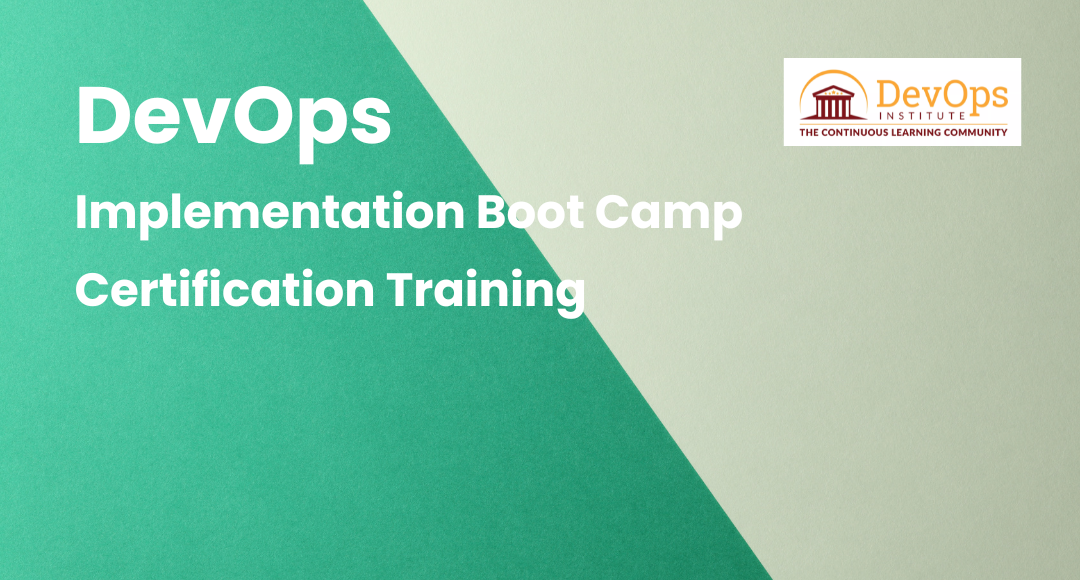
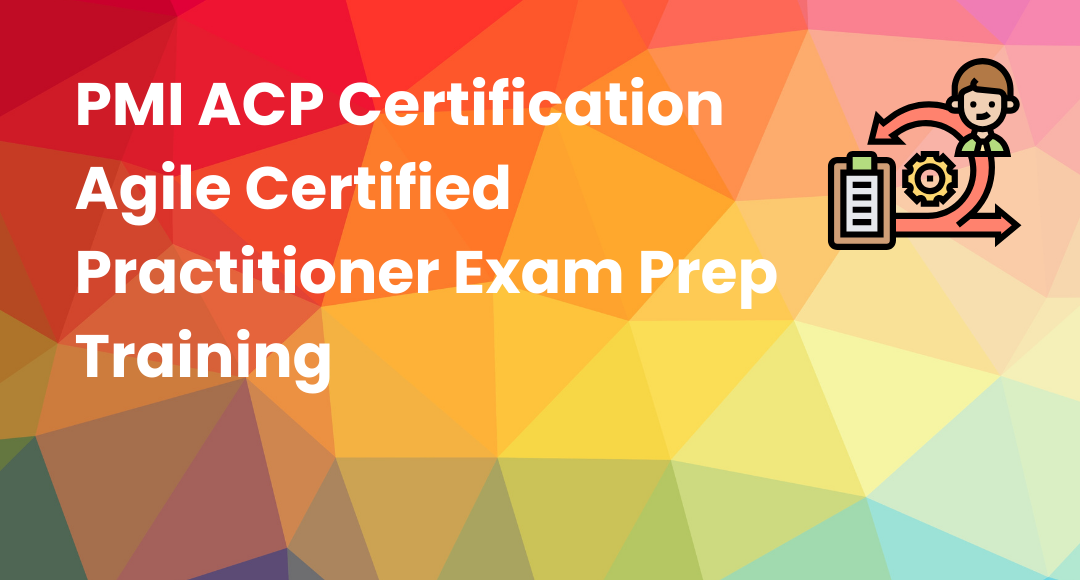

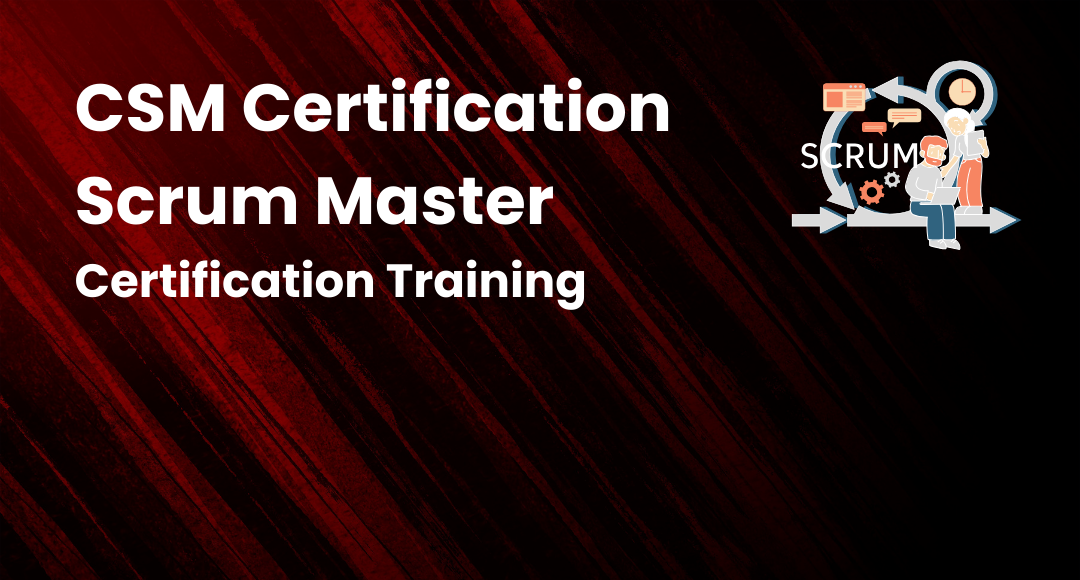
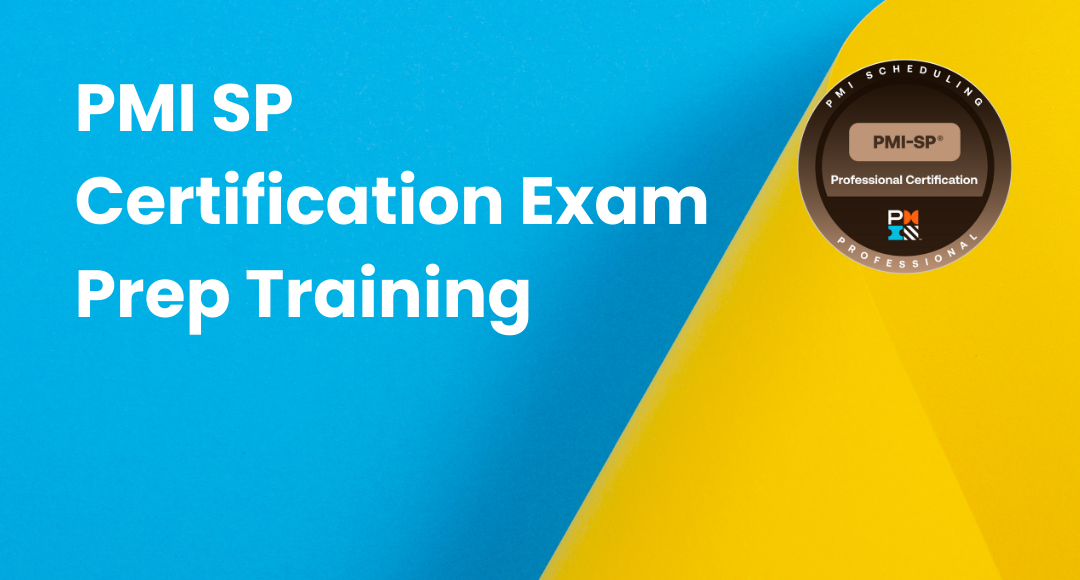

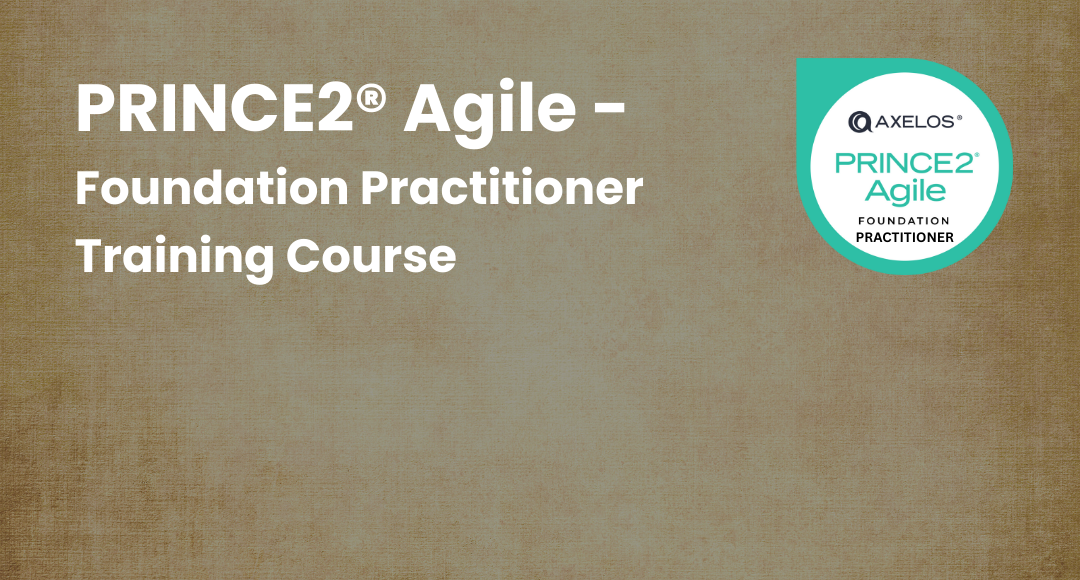
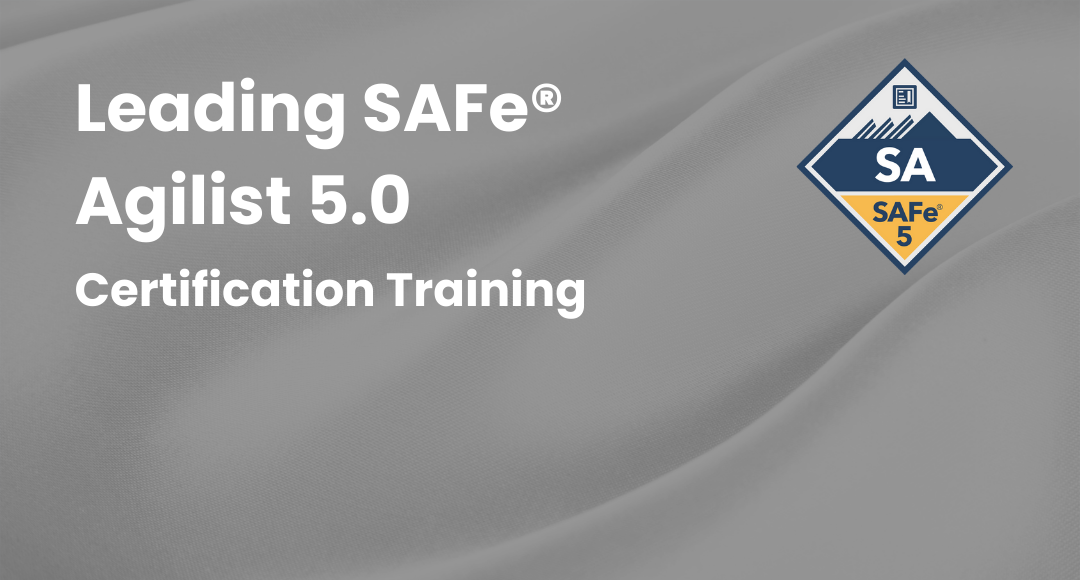
+Certification+Training.png)
